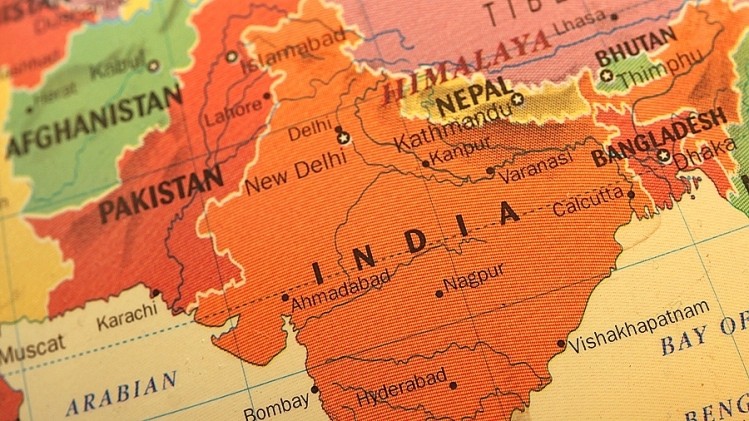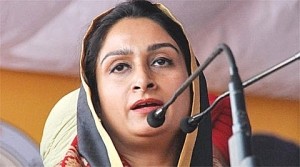Region in focus
South Asia radius

Pearl millet that has been bred to be richer in iron is able to reverse iron deficiency in school-aged Indian children in six months, research has found. In just four months, iron levels improved significantly.
Previously, the same iron-rich pearl millet had been shown to provide iron-deficient Indian children under the age of three with enough iron to meet their daily needs, and adult women assessed in Benin with more than 70% of their daily needs.
Lack of iron impairs cognitive development and behaviour in children, and adults’ ability to work. Severe anaemia, often caused by iron deficiency, increases risks to women in childbirth, including death. Despite efforts to curb iron deficiency through supplements and fortified foods, iron deficiency remains the most widespread nutrition deficiency in the world, affecting 1.6bn people.
Biofortification is a novel approach pioneered by HarvestPlus, a global programme to improve nutrition that helps close the deficiency gap by conventionally breeding food crops that are naturally higher in key vitamins and minerals.
Pearl millet is eaten daily by more than 50m people in the semi-arid regions of India and by millions of people in Sahelian Africa. The iron-rich pearl millet variety used in this study was developed in partnership with the International Crops Research Institute for Semi-Arid Tropics (ICRISAT) in India.
In the study just published, school children aged 12 to 16 years, many of whom were iron-deficient, ate iron-rich pearl millet in the form of bhakhri (a flat, unleavened bread) at midday and evening meals.
Eating iron-rich pearl millet significantly improved their iron status in four months, compared with ordinary pearl millet. Those children who were iron deficient at the start and ate iron-rich pearl millet bhakhri were 1.6 times more likely to have resolved their iron deficiency compared with those who ate bhakhri made from the ordinary pearl millet.
According to Dr Jere Haas of Cornell University, who led the study: “More than 40% of these school-aged children were iron-deficient at the start of our study. We now have clear evidence that feeding iron-biofortified pearl millet to improve iron status in secondary school-age children works.”
Fruit prices up by 45% this season, says Assocham
Fruit prices have skyrocketed by 40-45% in Indian metros and major cities due to unseasonal rain over the last few months, Assocham has found.
The Associated Chambers of Commerce and Industry of India study revealed that more than half of India’s lower-middle-class population has been forced to skip or squeeze their budgets for fresh fruits because of the rising prices of seasonal produce.
Mango is selling at Rs100 (US$1.57) a kilo in the retail market while the premium variety Alphonso is costing Rs200-400 per dozen courtesy unseasonal rains which resulted in production loss up to 50 percent in some states.
Bananas, which used to sell at Rs 30-40 per dozen in the past year, are now retailing at Rs60-65 per dozen. A single banana sells for Rs5 to Rs 7at different stalls, while apples cost double the price of last year with the prices of imported varieties going further up, adds the paper.
“Almost all fruits and vegetables in the metro cities markets have become costlier, with many becoming out of the reach of the middle class family. Prices of brinjal [aubergine], onions, cucumbers and tomatoes, besides fruits, have also gone up," Assocham secretary general DS Rawat said.
Government delegation arrives to open Assam food park
India’s food processing minister has visited Assam to open the country’s latest mega food park. Developed at a cost of Rs760m (US$12m) over 50 acres, the park will have industrial sheds for SMEs, developed industrial plots for food processing units, a substantial dry warehouse and cold storage, and lab facilities.
The inauguration of its central processing centre this week attracted India’s home minister and Assam’s chief minister, as well as Harsimrat Kaur Badal, the minister for food processing industries, illustrates how important these food parks have become to the BJP government.
“Mega Food Park will leverage an additional investment of around Rs250 crore in 30-35 food processing units and generate a turnover of around Rs450-500 crore (US$70-79m) annually. The park will also provide direct and indirect employment to 6,000 people and benefit about 25,000-30,000 farmers,” said Badal.
F&B industry growing in India at 24%
India’s food and beverage industry will see revenues of almost Rs4tr (US$59.6bn) industry by 2017, according to a report by Grant Thornton India for Ficci.
Overall F&B has been growing at a rate of 24%, with fast food having the largest share, at 45%. The report predicts this segment will grow by 16.6% a year, followed by casual dining (32%), which in turn is expected to expand at 10.1% annually.
Comprising 22% of the market, standalone restaurants are the quickest-growing, while the cafe segment, with a 12% market share, is growing at 10.7% a year.
Untapped opportunities abound in smaller towns for quality food chains, said Devndra Chawla, group president for food brands at Future Group and co-chair of Ficci’s task force on food retail.










